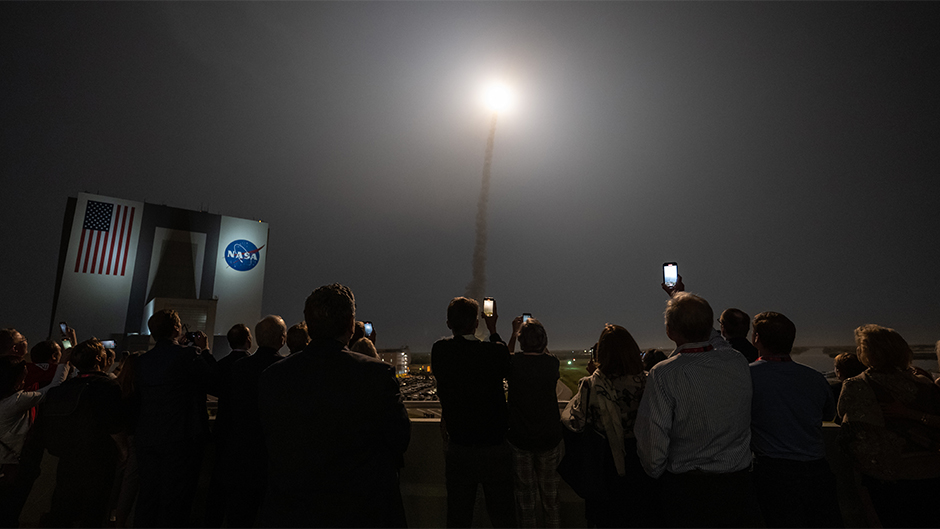Crowds of onlookers and millions of viewers online witnessed NASA’s Space Launch System (SLS), the most powerful rocket in the world, take off at 1:47 a.m. EST Wednesday from the Kennedy Space Center in Florida, completing the first leg of NASA’s historic Artemis mission.
According to NASA, “The first in a series of increasingly complex missions, Artemis I will be an uncrewed flight test that will provide a foundation for human deep space exploration, and demonstrate our commitment and capability to extend human existence to the Moon and beyond.”
“This is perhaps the biggest scientific and technological endeavor since the Apollo program,” said Qingda Yang, chair and professor in the Department of Mechanical and Aerospace Engineering. “The goal is not only to revisit the Moon, but to eventually establish human habitats on the Moon for scientific research and the mining of precious materials.”
“What an incredible sight to see NASA’s Space Launch System rocket and Orion spacecraft launch together for the first time. This uncrewed flight test will push Orion to the limits in the rigors of deep space, helping us prepare for human exploration on the Moon and, ultimately, Mars,” said NASA Administrator Bill Nelson.
Artemis I was initially set to launch in September, but technical issues as well as Hurricanes Ian and Nicole required NASA to push the launch date. Yang along with researchers at UCF are working to develop advanced materials that would prevent engine bleeds like the one that initally delayed Artemis I the first time around.
Regardless of the delays, Yang is excited about the program’s impact. “It will make younger generations more passionate and interested in science and technology. It’s crucial to educate future generations to be innovative so they can confront many existential problems facing mankind with new theoretical and technological solutions. Artemis will also lead to tremendous investments in new technologies, just like what happened after the Apollo program between the ‘70s and ‘90s.”
“With the Artemis 1 launch, I am very excited about watching the beginning of a sustained human presence on the Moon,” said Neyton Baltodano, Miami Engineering junior and president of the University chapter of the American Society of Mechanical Engineers (UM ASME). “I believe that, as humans, we are called to explore outer space and that the desire to explore is in our nature.”
UM ASME is participating in the NASA Lunabotics competition, which entails designing, building, and testing a lunar mining robot. UM ASME has also been invited to participate in a project designing power boots for astronaut mobility on the Moon and Mars.
“Miami Engineering considers Space Sciences and Engineering as one of its key strategic initiatives,” said Pratim Biswas, dean of the College of Engineering. “Our faculty and students are hard at work building the future of space travel, including habitation, autonomous mobility, aerodynamics and propulsion, sensing and imaging, and advanced materials. We’re very proud of our alumni as well. Erisa Hines Stilley, for example, currently serves as the Entry, Descent, and Landing Systems Engineer, Operations Co-Lead on the Mars2020 mission. We look forward to more such contributions in the near future.”

